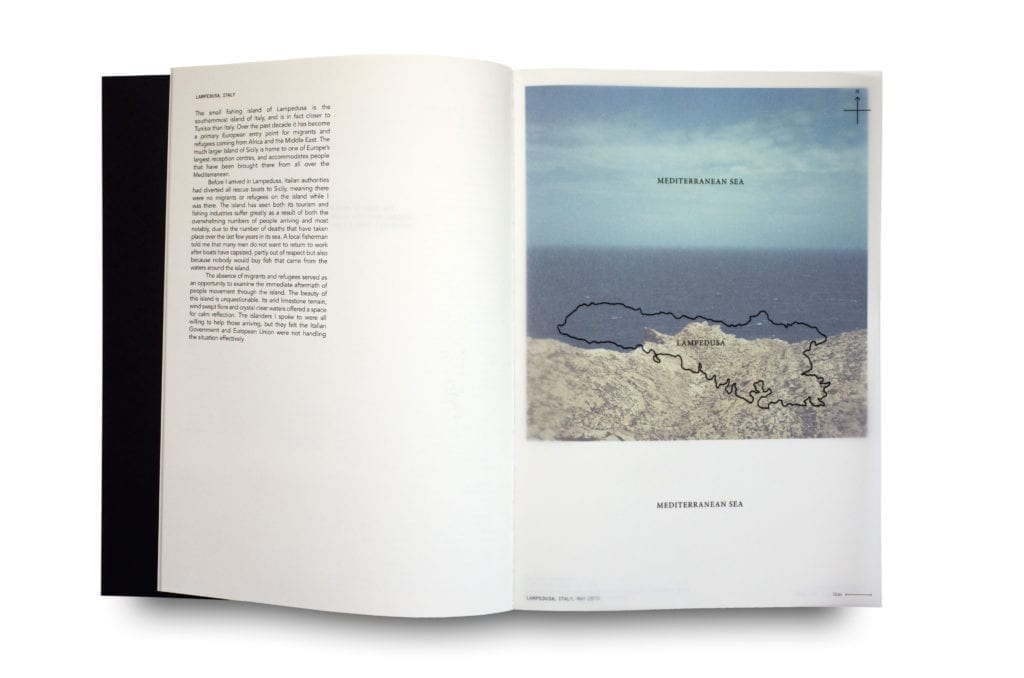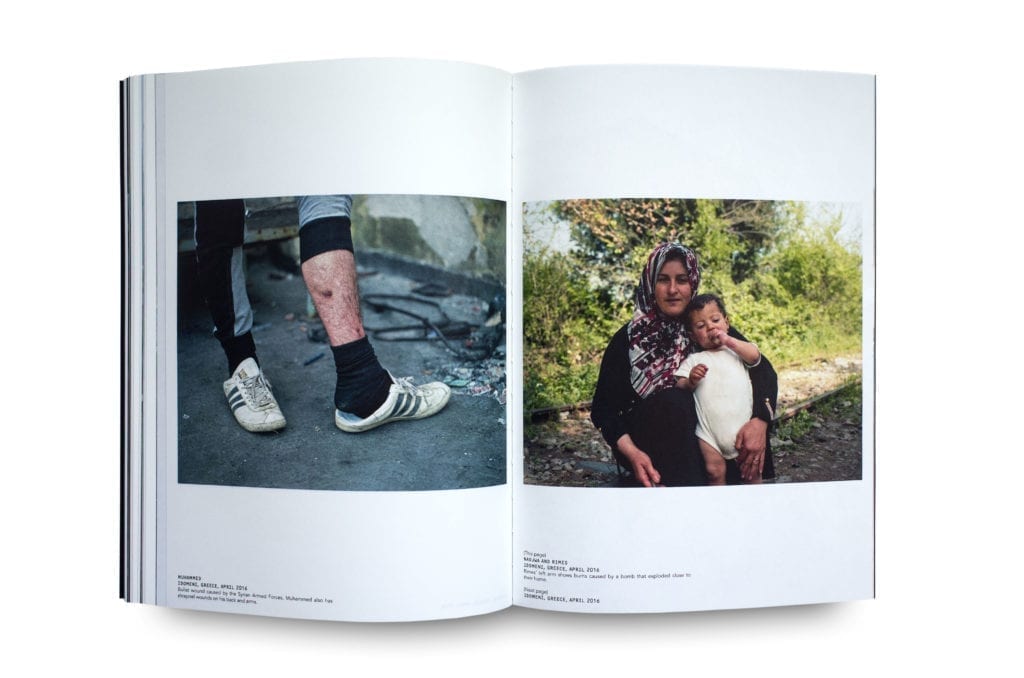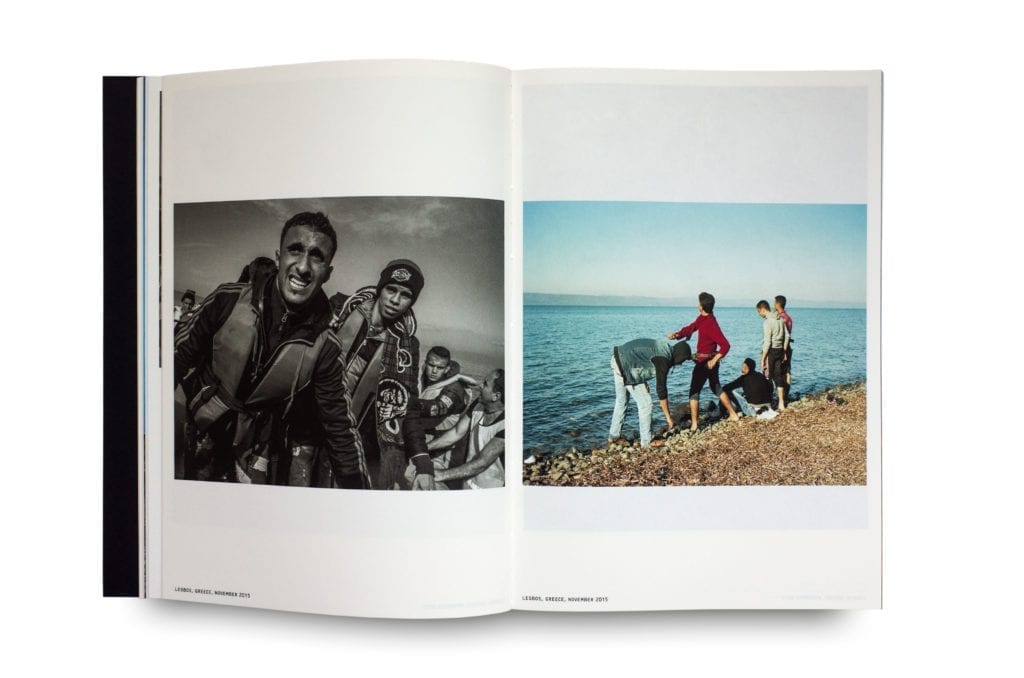On 13 and 19 April 2015, two migrant boats capsized off the coast of Libya, with the loss of more than a thousand lives. Many of those who drowned were refugees, fleeing civil war, and therefore protected under the 1951 Refugee Convention, but their deaths won little sympathy on the pages of some of the UK’s biggest newspapers.
On 17 April, The Sun columnist Katie Hopkins wrote an article comparing migrants to cockroaches or the norovirus, adding that Britain needed gunships, not rescue boats, to send them back. “No, I don’t care,” she wrote. “Show me pictures of coffins, show me bodies floating in water, play violins and show me skinny people looking sad. I still don’t care.”
As the so-called migrant crisis continued unabated, so too did the negative press. By July, the Daily Mail, Britain’s most-read newspaper brand and Hopkins’ new employer, was running headlines referencing “The ‘swarm’ on our streets” and calling for the army to go to the Jungle refugee camp in Calais. A year later, the Daily Express warned of migrants paying £100 “to invade Britain”.
Like many people, childhood friends Daniel Castro Garcia and Thomas Saxby were horrified – both by the humanitarian disaster and the media response. Born in the same hospital to Spanish and Mexican parents respectively, they say this demonisation of migrants started to feel personal. “The fact that my mum and dad are foreign, it’s played a massive role in my life,” says Castro Garcia, who started out as a filmmaker.
“When those two boats capsized, the way that was written about, the adjectives used, and the type of photographs – on a personal level, that resonated. I know the kind of things my parents went through when they moved to the UK, and I know they’ve contributed really positively to British society.
“It felt increasingly uncomfortable, the way they were representing people who effectively did what my parents did, for the same reasons – poverty,” he continues. “Some of the things that were written were just unbelievable bullshit about people that are just the same as any of us. What an individualistic, separatist, regressive mentality.”
“The Katie Hopkins article is obviously an extreme, but it’s there,” adds Saxby, a graphic designer. “It’s so narrow-minded, and it beggars belief that it’s got that far. It’s not just this small, crazy person in the corner; this is a massive loudspeaker [as her views were published by The Sun].”
“Why is this outlet being provided for her?” agrees Castro Garcia. “It’s horrendous. [Her article] has absolutely no journalistic or informative calibre whatsoever. And forget about her, it’s got sod all to do with her, but it’s the fact that there is this opportunity for that language to be out there. It’s hateful.”
Spurred on to see what was happening for themselves, they decided to go to Lampedusa, the small Italian island to which many boats were heading last spring. When they arrived they found the migration route had moved on, but they photographed the wrecked boats, abandoned clothes and graveyards left behind, then headed to Catania, a port in Sicily, where they witnessed two separate migrant landings. Moved by what they saw, they felt compelled to share it.
“We didn’t have a publication, we didn’t have a big newspaper commission, but immediately there was this feeling that we wanted to show what was happening there, at least to our circle of friends,” says Saxby. “We were using Instagram a lot, using that as an outlet to show people these photos.”
After a month they returned to the UK, just as the migrant route through the Balkans “kind of exploded in the media”. Castro Garcia found himself “desperate to get out there”, and managed to win the funding to do it from The Lister Charitable Trust. Realising they were working on a book-length photographic project, he and Saxby decided to formalise their approach, with Castro Garcia taking all the images and Saxby handling the design. Castro Garcia headed to the Balkans for a two-month road trip, sometimes travelling with Saxby and sometimes with a friend and producer, Jade Morris.
“We thought we’d give ourselves time to get to these places which, while we were on the move, were changing every day,” he says. “We never expected to go to Greece, but we ended up going all the way to Lesbos, driving all the way. The more we got into it, the more we wanted to give this full, rounded picture of the whole thing. It is a massive task, and we’re not necessarily done, but we felt it all fed into understanding the picture – you know, the ‘what-the-hell-is-going-on’, all these people leaving, all this shit going on, the sheer scale of it.”
Castro Garcia ended up taking several trips over the next year, often with Saxby, and the result is Foreigner – Migration into Europe 2015-2016, a 240-page book shot in the northern Mediterranean, the Balkans, Calais and cities such as Berlin and Vienna, where migrants have temporarily settled. Combining landscapes and off-the-cuff scenes with portraits of individuals – some of whom Castro Garcia returned to at different times and places and is still in touch with now – alongside short, to-the-point texts, it makes for a sobering read.
Images shot at the border between Slovenia and Austria capture a large number of children left waiting in a field at night in November, with adults burning trees to keep them warm. Photographs from Vienna show a refugee from Syria who has a bullet wound, which he says was inflicted by his own government.
“What’s happening in Syria is absolutely unthinkable really,” comments Castro Garcia. “That is the level of government in a country that has highly educated people and wealthy people – it’s not a backwards society, it’s modern world. What’s an 85-year-old doing in a field in Greece, how does that happen? That’s like getting my nan to move over to England when she’s never left her village.”
Foreigner narrowly missed winning Mack’s prestigious First Book Award, and has since been championed by the publisher’s founder, Michael Mack, alongside many other influential figures: Magnum photographers Martin Parr and Alec Soth backed the pair’s successful Kickstarter campaign; Emma Bowkett, photography director of the FT Weekend Magazine, invited them to present their work at Photo London; and Bruno Bayley, European managing editor at Vice, nominated them for the First Book Award.
“The European saga of the refugee crisis is the biggest story in the last two years,” comments Parr. “The book is the perfect home for a complete statement and reflection on this ongoing situation – all the more so given our weekend supplements’ reluctance to deal with difficult issues. Foreigner is a very welcome project, where the care and attention in describing the narrative is applied with great sensitivity and a good eye. I was very happy to support this project, and delighted to see it published just a few months later.”
Mack has been the book’s biggest supporter, presenting it at Photo London and Offprint, including it on Mack’s website and newsletters, and personally writing to Parr and Soth urging them to help. He was also instrumental in ensuring the book got made, freeing up his in-house writer, Izabella Scott, to work on it, helping finalise it, setting up the printing at die Keure in Belgium, and even suggesting the Kickstarter campaign.
“I felt it was such a good subject, so pertinent to this particular moment in world politics, and [with] such important content – great photographs and very personal takes with the text, which also present information you can’t access anywhere else,” he says. “I felt they should do it.
“So I got them in and said, ‘The thing to do is to self-publish it – my publishing is slow, we can’t publish a book in six weeks and get it into the marketplace. But it needs to be in the mainstream media now, not in a year, because otherwise it will be historicised’. Perhaps unfairly, I said to them that they needed to be ready in time for Photo London.”
The timeline put huge pressure on the pair, but they’d already faced a tight deadline to get the dummy together to enter for Mack’s award, realising he “makes the best books in the world!” after Bayley had nominated them. And ultimately, they say, it put a cap on the first phase of the work they were doing.
They already have clear ideas about what they want to do next, having decided to make a crossing on a migrant boat themselves and film it. They also plan to give migrants cameras so that they can take photographs themselves, and are already talking to Channel 4 and Médicins Sans Frontières about the possibility of working with them. They are also continuing to work together, setting themselves up as the John Radcliffe Studio, a name referencing the hospital in which they were both born in Oxford.
“It’s a really multicultural place,” says Saxby. “Our school had Koreans, Italians, Filipino, Indian, Chinese, Mexican, Bolivian – every nationality you could think of. Everyone’s mum was from somewhere.”
In the meantime, the thoroughness and timeliness of their project has ensured it’s acquired major media traction. They have got their images into the mainstream which so troubled them last spring. Even so, they say their ultimate aim is to get people to read the book and engage with the more rounded picture it presents.
“What we’re trying to get across is our experience, the number of people we’ve met, the highs and lows, the stuff on fire, the people hugging and all that,” says Saxby. “If someone takes all that in it’s just going to be a deeper, more impactful experience.”
“The book attempts to capture individual stories and to use photography as a peaceful and empowering tool, rather than one of judgement,” writes Castro Garcia in the introduction. “The photographs are a protest against those who so readily attack refugees and migrants entering Europe without taking into consideration the dangers faced during the journey…
“This complicated and delicate situation may indeed need complicated solutions, but one of the first things we can do is address the political discourse around these issues. When journalism and public discourse move into the sphere of inflammatory language and misinformation, so often the real victims are forgotten.”
https://smithfund.org/recipients/2017-daniel-castro-garcia www.danielcastrogarcia.com This interview was first published in BJP’s September 2016 issue, which put a special focus on Migration. For more information on the issue, go here. Daniel Castro Garcia went on to win BJP’s International Photography Award and a solo show with this project, for more information visit www.bjpipa.com www.mackbooks.co.uk




